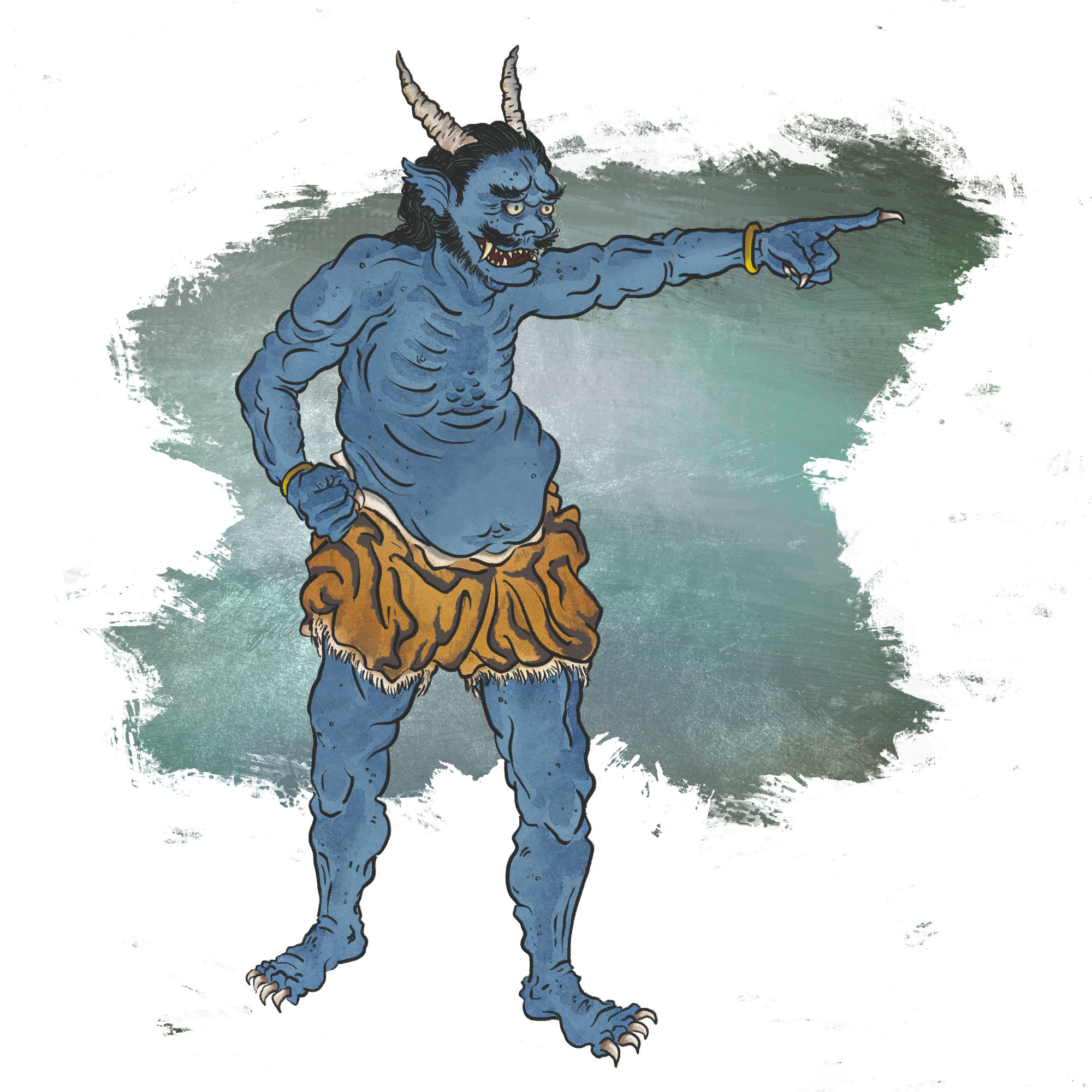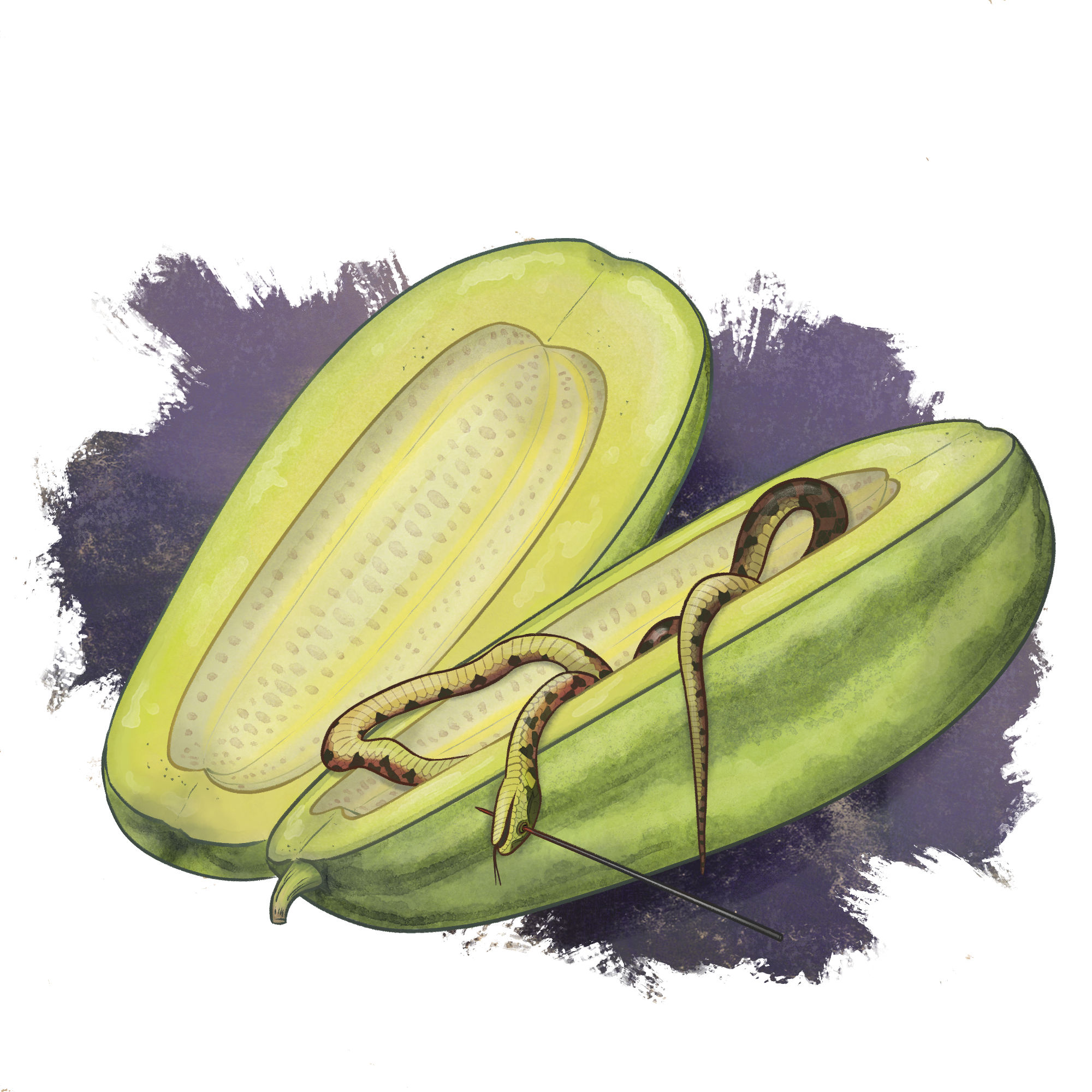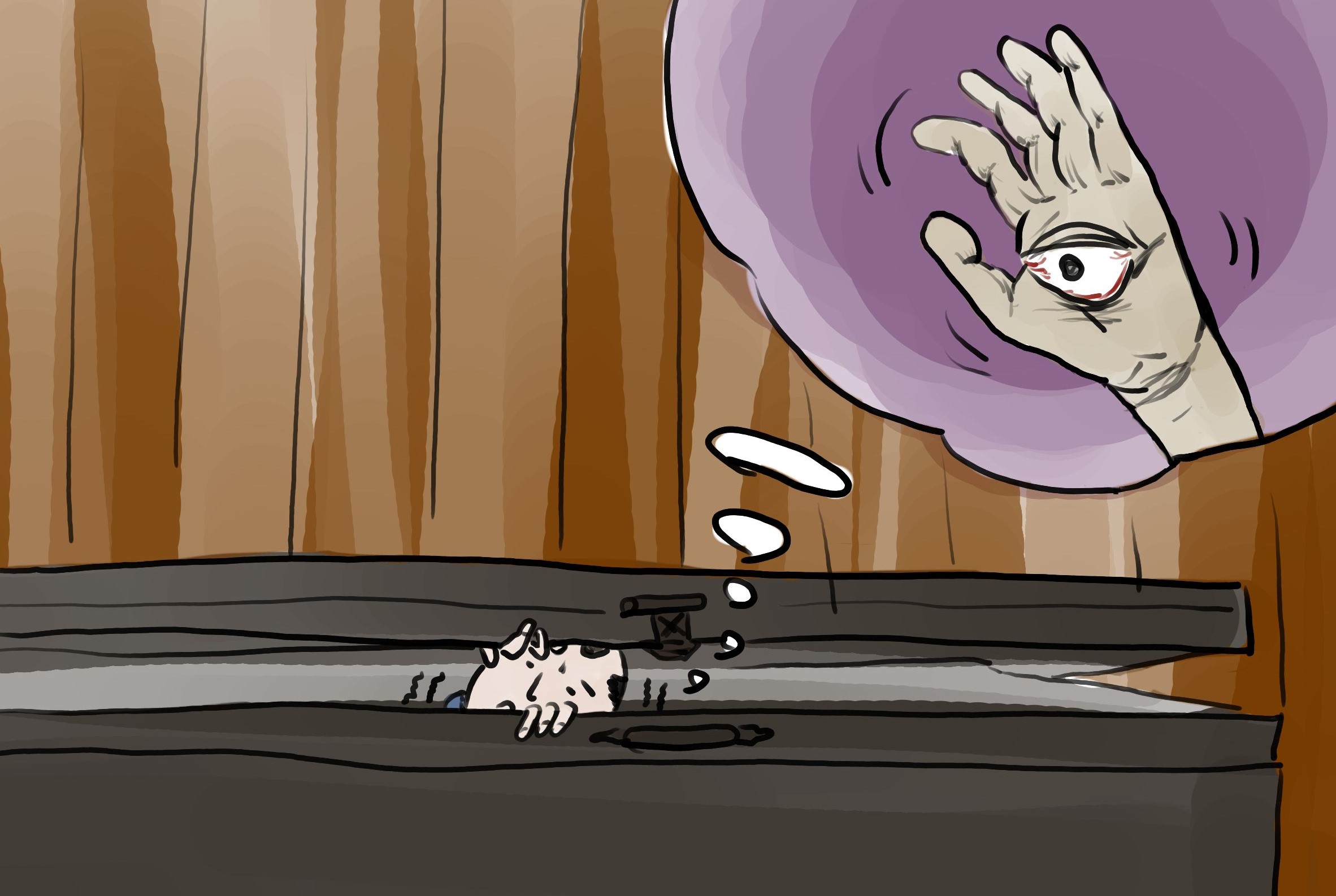Tonight’s story is based on events that took place in 1611 in one of the most haunted locations in Japan: Himeji Castle. But first, two vocabulary words that appear in the story:
kijin: We’ve seen oni already during A-Yokai-A-Day. Kijin is written with the character for oni plus the character for a god. So kijin can be translated into something like “demon god.” The word can be used for any spirit that is extremely powerful and fearsome. Some kijin are good, acting like defenders of the faith and use their wrath and ferocity to protect the weak. Others are thoroughly wicked. And some are just excessively proud, and punish those who insult them.
gongen: This refers to any god in Shinto-Buddhist syncretism. When Buddhism was spreading throughout in Japan, Shinto kami were interpreted as incarnations of various buddhas and figures from Buddhist cosmology. Due to this, virtually every Japanese god has an Indian counterpart. This can be confusing, but for the purposes of story a gongen is the same as a god.
Now, a little background on the story:
Ikeda Terumasa (referred to in the story as Ikeda Sanzaemon) was the first daimyō of Himeji Domain, and a rich and powerful ruler. After basing his clan in Himeji City, he set about renovating and expanding the castle, transforming it into the grand fortress and icon of Japan that it is today.
The castle’s renovations were completed in 1608, and almost immediately afterwards, strange things began happening there. They were blamed on the fact that, during the castle’s expansion, Lord Ikeda dismantled the shrine to a local god called Osakabe, which was located on the castle grounds, and had it re-enshrined on the outskirts of town in a large, communal shrine housing many gods. Osakabe’s wrath was said to be the source of these hauntings.
In 1611, Lord Ikeda fell gravely ill. This, too, was said to be the work of the vengeful Osakabe. In order to appease the god, Ikeda relented and re-enshrined Osakabe in the castle. You can still see her shrine today, on the top floor of the keep in Himeji Castle.
The yokai in tonight’s story is none other than Osakabe. (Incidentally, I’ve written about Osakabe before, in my book The Hour of Meeting Evil Spirits, which you can get from Amazon or on the yokai.com shop.) Though she is not named in the story, the figure appears in the guise of a strange woman in the main keep of Himeji Castle and refers to herself as “the famous gongen of this land.” That can be none other than the god of the land Himeji Castle is built upon: Osakabe.
If you like today’s story, please consider joining my Patreon and supporting my work for just one dollar. You’ll get Japanese folktales and illustrations like this every week, all year long!
The Illness of Lord Ikeda Sanzaemon of Harima Province
When Lord Ikeda Sanzaemon, ruler of Harima Province, became ill and was in critical condition, a high priest was called from Mount Hiei to perform various prayers for seven days and seven nights. At midnight on the seventh night, a woman of about thirty years of age, wearing light makeup and a fine silk kimono, turned to the high priest and said, “Who do you perform such prayers? He cannot be helped. Stop this immediately.” Then she stepped up onto the altar and stood glaring at the high priest.
The high priest, by nature a noble monk, said, “Who are you that speaks to me in the form of a woman?” And he asked her several questions. Suddenly the woman revealed her true form: a six meter tall kijin. The high priest grabbed the sword that was beside him and tried to stab her.
“I am the famous gongen of this land!” said the kijin. Then she kicked the high priest to death and disappeared into thin air.
This story is told by the samurai of the Ikeda clan.







